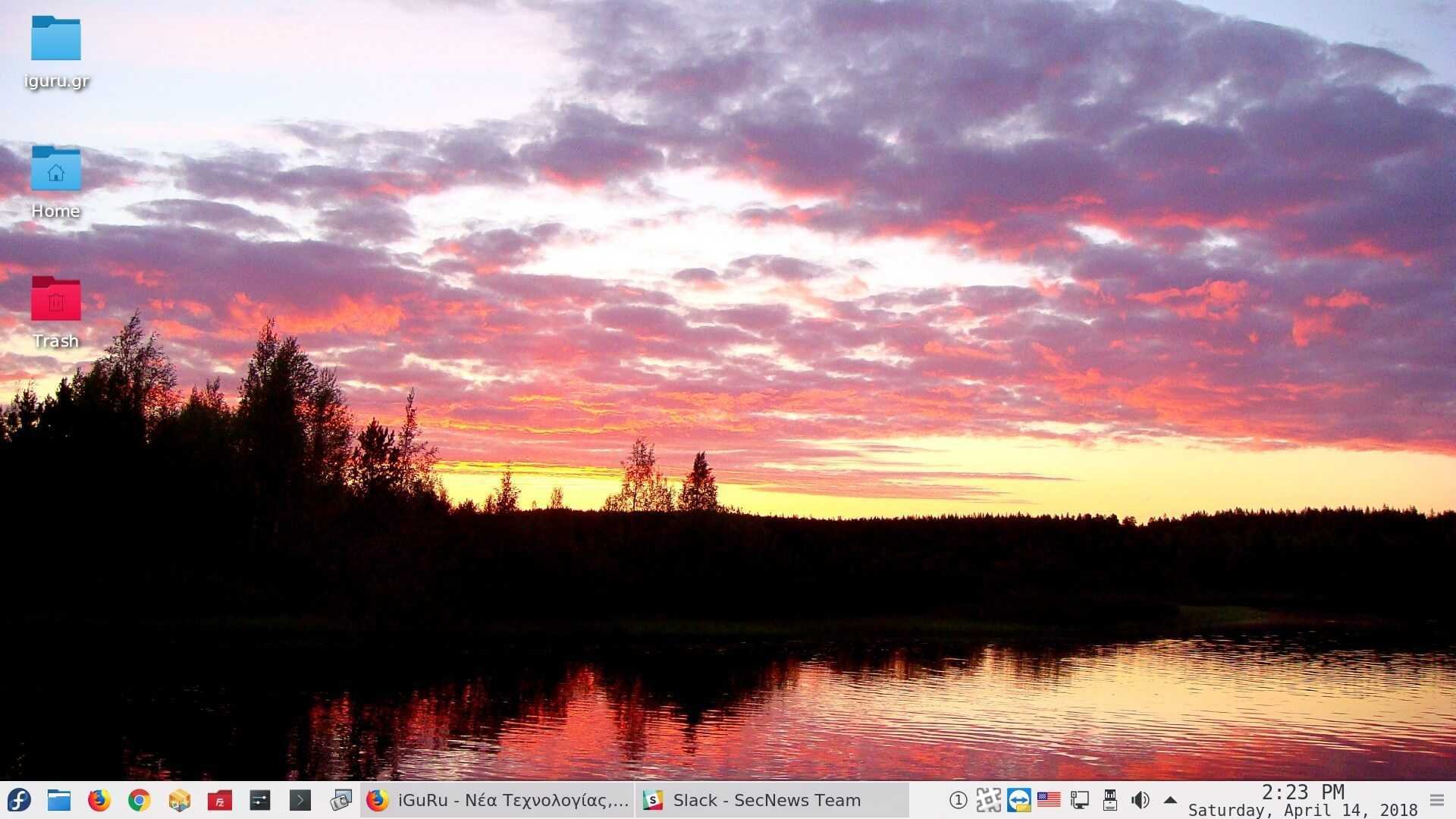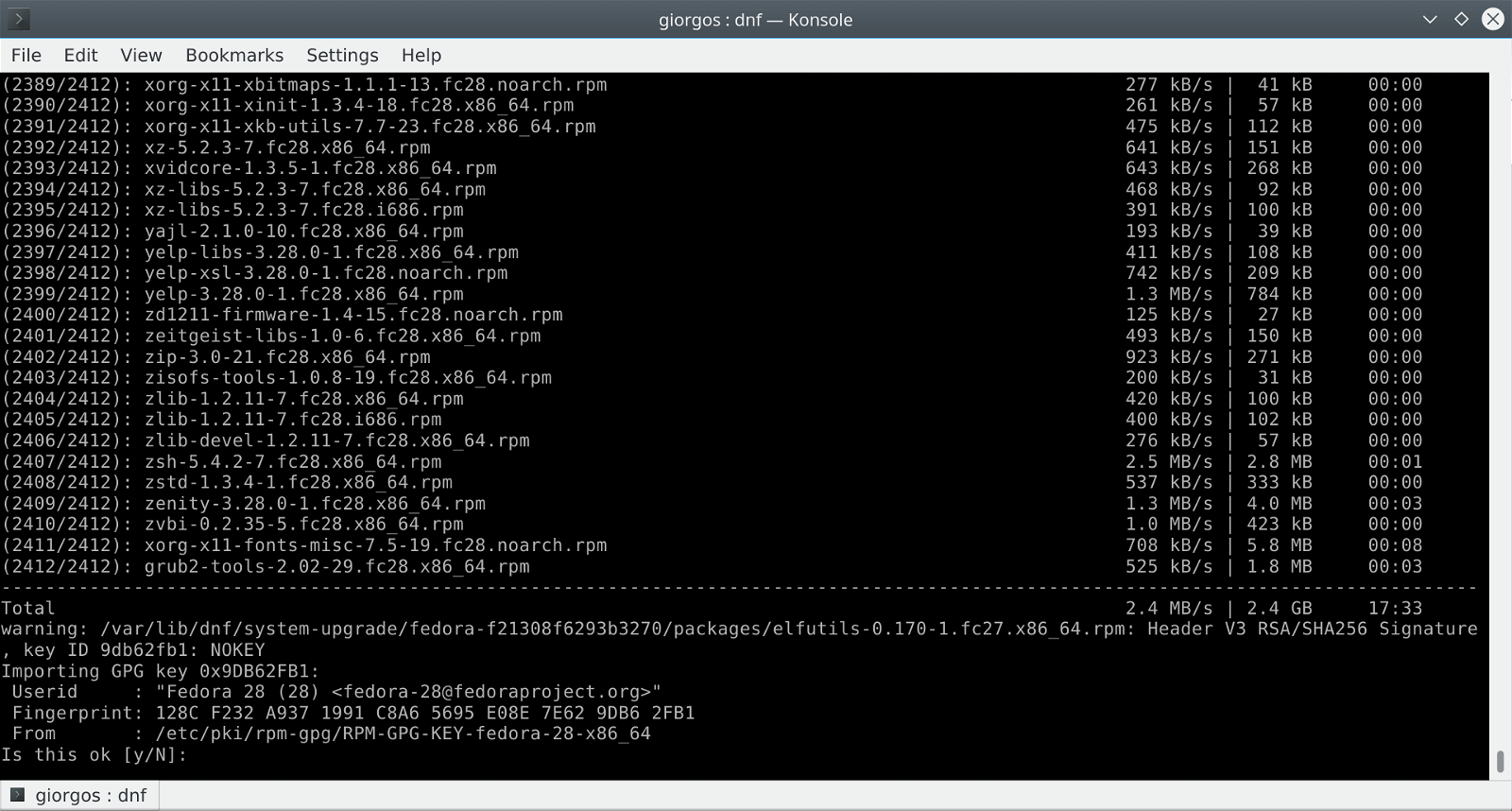Fedora 28: His team Fedora Project announced the launch of the new 2 beta for the next major release of the renowned distribution. The new final version of the Fedora 28 distribution will be officially released from May 1st 2018 (Developer Preferred Date) or 8 May 2018 if something goes wrong.
Fedora is one of the most popular GNU / Linux distributions. It is a result of Fedora Project, a wide community of volunteers and is funded and generally supported by the famous Red Hat. This of course means, reliability… RedHat.
The Fedora is free for anyone. So anyone can use, modify and distribute it. It is developed by people around the world who work together as a community. The Fedora Project or Fedora Project is open and everyone is welcome to join.
Fedora releases a new version every 6 months and you can see the Fedora's life cycle in the relevant wiki page of the project.
Today I've decided to install the new beta, although I think that cutting edge distribution and beta can be quite unstable.
The simplest way to install is from the Live DVD that includes the relevant application (Anaconda) of Fedora, but because I already have the previous fixed version of the distribution installed, I decided to upgrade using dnf. Below we will see how to upgrade your system without downloading an ISO.
Installation can also be done with netinstall CDs released by the distribution, but with Live DVD is much faster, since it does not download packages from the internet.
Let's start with dnf:
Before we start it would be good to create copies ασφαλείας των σημαντικών δεδομένων σας. Κάθε change on your system is potentially dangerous, and you should be prepared. In case you update to a stable version, it would be a good idea to also download a Live ISO and make sure that your hardware (graphics card, wifi, etc.) work well with the latest kernel (the kernel used by the Fedora distribution in version 28 is the latest release: linux 4.16.2) and the drivers.
Update your system using the standard dnf command:
sudo dnf upgrade --refresh
After updating, we recommend restarting your computer, especially after installing a new kernel.
Install Package-x-generic-16.pngdnf-plugin-system-upgrade:
sudo dnf install dnf-plugin-system-upgrade
Get the updated packages:
sudo dnf system-upgrade download --refresh --releasever = 28
If you are upgrading to Rawhide, you will need to enter the rpm gpg key (as described in this publication, you do not need the next step, the key will get it semi-automatically asking for your license).

sudo rpm - import / etc / pki / rpm-gpg / RPM-GPG-KEY-fedora-29-primary
Do not worry about 29 above, if there is no rpm it will insert the next smaller key.
If you have packages installed from third party repositories, they will not be installed. None of these should be necessary for the functionality of the system. If there are some that are necessary you can install them later.
Let's continue with the upgrading process. Once all the necessary packages have been downloaded to your computer, you can start the upgrade with the following command. Due to the full upgrade of your system, you will need to restart.
sudo dnf system-upgrade reboot
The command will immediately restart your machine. Fedora will start using the same kernel, but this time, you will see the upgrade process on the startup screen. Wait until Fedora 28 is upgraded.





